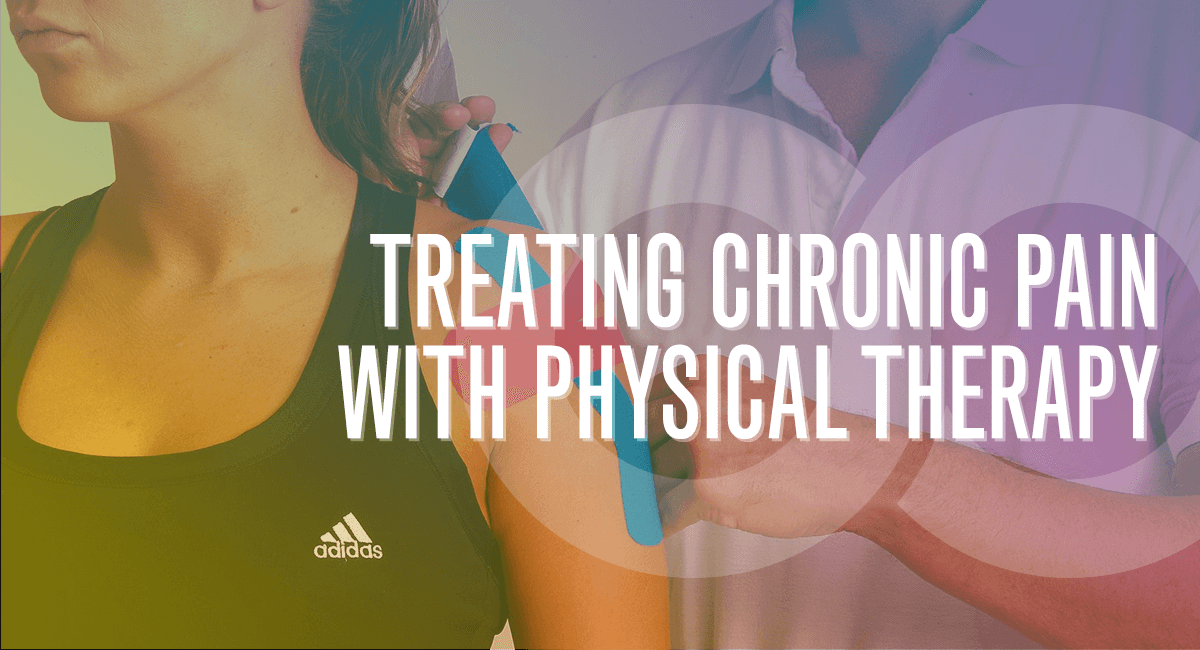Treating Chronic Pain With Physical Therapy

Everyone at some point during his or her life will experience some form of pain. This pain can be physical, emotional, psychological or mental. The pain can be short lived (acute pain) or can linger and become a long-lasting issue (chronic pain). Although acute pain can be short lived, often times that short-term manifestation can turn into a long-lasting issue that can result in chronic pain. This article will focus on the explanation of chronic pain and how physical therapy can assist with decreasing your symptoms.
What is chronic pain?
Chronic pain in its simplest definition is discomfort that persists for longer than 3 months. Chronic pain can refer to symptoms lasting longer than the normal projected healing time. Chronic pain differs from acute pain in that, often times, there are unknown causes and no known cure.
What are some examples of chronic pain?
– Headaches
– Low back pain
– Arthritis
– Fibromyalgia
– Neurogenic pain (pain from nerve damage)
– Psychogenic pain (unrelated to past injury or visual damage to the body’s tissues)
What are your options in treating chronic pain?
With the advances in modern medicine, there is no need to suffer in silence when it comes to chronic pain. There are many options available to those experiencing chronic pain such as medications, surgery, acupuncture, chiropractic adjustments and psychotherapy. Although this list is not exhaustive, another form of treatment that can be proven to be helpful is physical therapy.
How does your body respond to pain?
Your body is equipped with pain receptors that can detect a threat to its homeostasis (well-being). Once the receptors are triggered, nerves send rapid signals to your brain to alert it to the posed threat. Your body will then respond accordingly in order to prevent further injury. However, with chronic pain, your body’s defense system goes on high alert and simple, unassuming movements can set off those pain receptors. Overtime, these overactive pain receptors will keep sending signals long after any tissue damage was stopped. This habitual cycle of chronic pain can lead to some detrimental impacts on the body including fear, activity decline and possible immobility.
How can physical therapy help with my chronic pain?
A physical therapist can conduct a thorough evaluation including subjective questioning and objective tests and measurements to strategize a treatment plan that is suitable to decreasing your pain and improving your quality of life. The best way for physical therapy to be effective is an open dialogue that will assess and continually reassess your signs and symptoms as your body may change once physical therapy starts. Most physical therapists will use the following treatments in order to ensure maximum effectiveness:
– Patient education
- Explaining the what, why, and how in order to get a grasp on how your chronic pain is affecting your body and quality of life.
– Exercise
- If you are experiencing any chronic pain symptoms, the pain threshold that your body can tolerate decreases over time. This means it takes less irritation/discomfort to set off your pain receptors. Increasing your physical activity will allow your body to dampen the pain signals that are sent to your brain.
– Manual therapy
- Manual therapy techniques include joint mobilizations, joint manipulations, muscle energy techniques and soft tissue massage. These are all techniques that can also dampen your body’s response to pain. Over time, these maneuvers can improve joint movement and range of motion, which can also decrease the pressure that causes the pain receptor activation.
In summary, chronic pain can be debilitating to one’s life. It can cause you to decrease your activity levels, isolate yourself from participating in your normal daily activities and have a negative impact on your mood. According to recent studies, over 100 million Americans are affected by chronic pain and over $500 million dollars is spent for treatment and lost work productivity. Don’t let chronic pain get the best of you, contact your physician and ask if physical therapy is right for you.